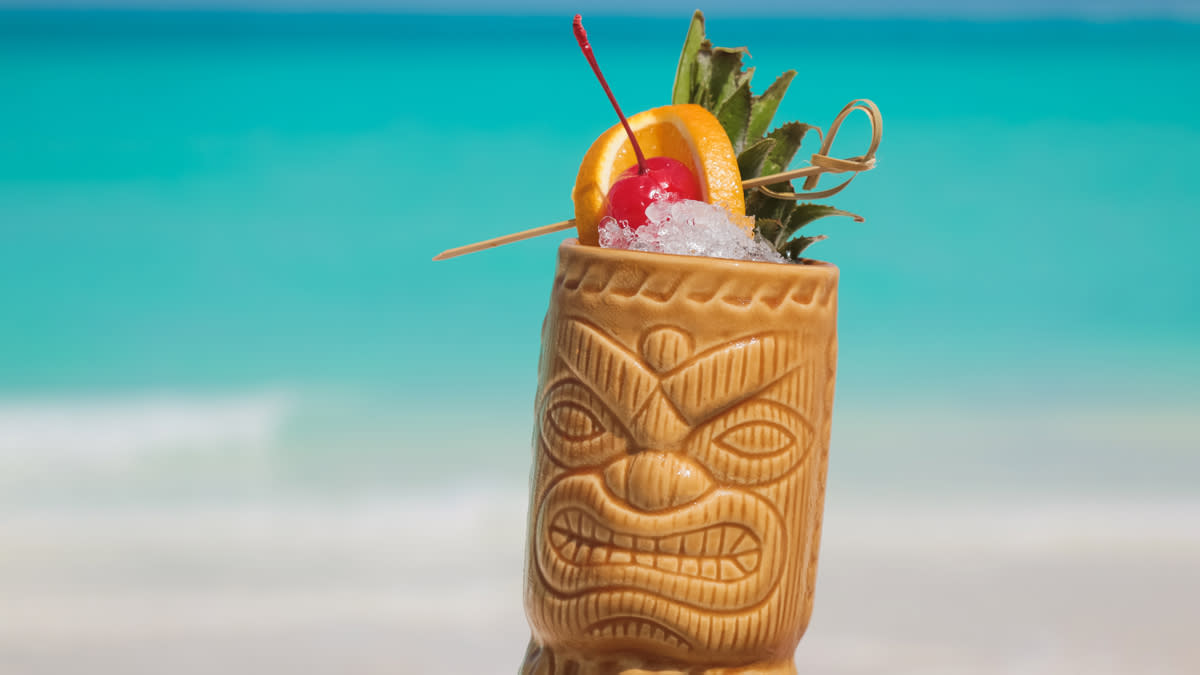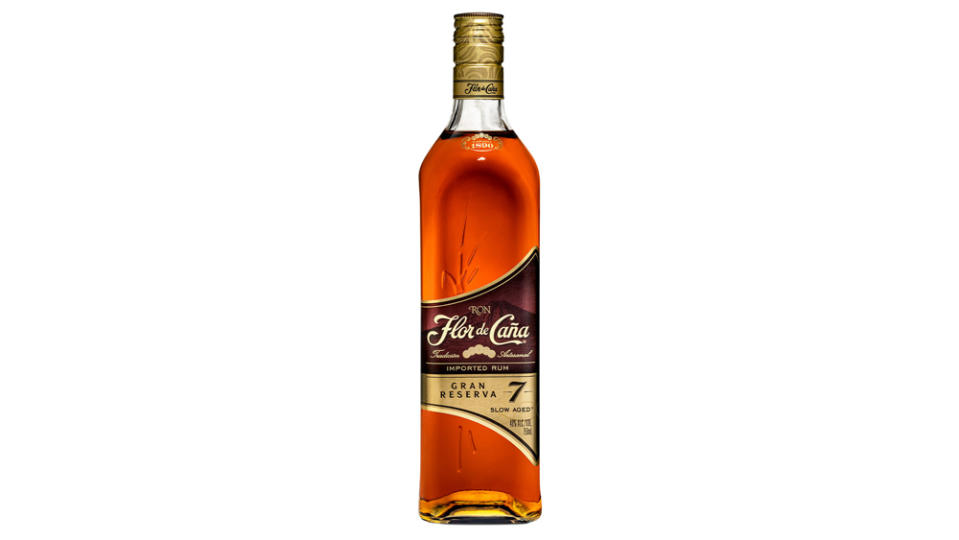How to Make a Scorpion Bowl, a Smooth Tiki Punch With a Strong Sting

The story goes like this: A scorpion is at the edge of a river and asks a passing frog to ferry it across. The frog hesitates, fearing the scorpion will sting it. “I won’t sting you,” the scorpion promises, “if I did, we’d both drown.” Mollified, the frog agrees, and halfway across the river, the scorpion stings it. “Why did you do that!?,” cries the frog as they sink, “You’ve doomed us both!” The scorpion shrugs all eight of its shoulders. “I’m a scorpion,” it replies.
We revisit this heartwarming fable to make a point: The Scorpion Bowl is what you think it is. It is a giant bowl of alcohol, and named, justifiably, for this capricious and violent creature, one for which every encounter is inherently dangerous. Over the years, it’s taken many forms—dozens of ingredients have blipped in and out of the Scorpion Bowl as it’s been adapted, borrowed, stolen, and reimagined—but what you can always count on is that it’ll be strong enough to sting you. It is, enduringly, a scorpion.
More from Robb Report
Hennessy New Magnum-Sized Ultra-Limited Cognac Can Be Yours for a Cool $22,000
How to Make a Brown Derby, the Honey-Kissed Bourbon and Grapefruit Cocktail
How to Make an Archangel, the Gin and Cucumber Cocktail That's Sinfully Delicious
The Scorpion Bowl is a creation of “Trader” Vic Bergeron, who came up with it somewhere in the early 1940s. Bergeron was a restaurateur, running a northwest-themed place called Hinky Dinks in Oakland, when a chance encounter with tiki literally changed his life. He went to Don the Beachcomber’s, in Hollywood, and fell in love. The drinks. The flotsam. The spectacle. All of it. He went home and closed Hinky Dinks, bought some rum, hung a bunch of nets and buoys on the walls, and reopened, enthusiastically, as Trader Vic’s.
This would happen more and more—tiki would be stupendously popular in the coming decades, with “tropical” bars sprinkled liberally throughout the country—but Bergeron was the Don the Beachcomber’s first and most successful imitator, exceptional in both his business sense and his mixological acumen. The coming wave of tiki bars would try to steal drink recipes from the Beachcomber and indeed from Bergeron himself, but Trader Vic did it the hard way: He went to the Caribbean, like Donn Beach did, to learn how to work with rum directly from the source. By the time he first published it in 1947, the Scorpion Bowl was, after the Mai Tai, his second most popular drink.
As for what’s in it, it depends on who you ask. Trader Vic, in his Bartender’s Guide, has three recipes for the Scorpion, two of which are essentially the same (rum, brandy, lemon, orange, and almond syrup) and the last of which has all that other stuff but also throws in a bunch of gin and, bizarrely, a half bottle of white wine. This ambiguity is compounded by the fact that the the imitation tiki bars that sprouted up all over the country either didn’t read Bergeron’s published recipes or didn’t care once they had, so everyone had their own “Scorpion” or “Scorpion Bowl,” with an attendant cacophony of ingredients: You’ll find grenadine and mango, pisco and vodka, the embalming fluid from a jar of maraschino cherries, you name it. One recipe I’ve seen has all this stuff plus a cup each of pineapple, passion fruit, and guava juices. It’s a lot.
These can be good, but for my Scorpion Bowls, I defer to Bergeron’s original. Scorpion Bowls are both smooth and boozy, and integral to their character is some measure of trickery—they don’t taste strong, which is how they get you. The rum is there for body, the brandy gives an oaky texture, the orgeat a floral, nutty sweetness, and the orange thins it out and helps mask the strength. In his book, Bergeron references its “light flavor” compared to the “punch of strong rum” of the Mai Tai which I believe to be the essential character of the Scorpion Bowl, embracing, perhaps, the duplicitousness of its namesake. It’s essentially a double but tastes mild and easy. Or, in other words, the Scorpion Bowl may seem like it’s not going to sting you, but it will. It’s a scorpion.
Scorpion Bowl (individual)
2 oz. lightly aged, “Spanish style” rum
1 oz. Cognac or brandy
0.75 oz. lemon juice
0.5 oz. orgeat
1 oz. orange juice
Add all ingredients to a cocktail shaker. Add ice and give a good shake for six to eight seconds. Pour contents, ice and all, into a tiki mug, top with more ice, and garnish with an orange slice, a cherry, and if you have it, a gardenia or two.
Scorpion Bowl (bowl-sized)
8 oz. lightly aged, “Spanish style” rum
4 oz. Cognac or brandy
3 oz. lemon juice
2 oz. orgeat
4 oz. orange juice
If you have crushed ice, this is a good time to use it—add all ingredients to a bowl with crushed ice and stir/agitate for 10 or so seconds to kick start the dilution. If you don’t, shake as instructed above, in batches if you have to. Serve with a plentiful array of garnishes: edible flowers, orange slices, cherries on picks, etc, and serve with an array of extra long colorful straws.
NOTES ON INGREDIENTS

Rum: I believe this drink is its truest self with a light, mild, aged rum, something without too much depth or intensity. There are exceptions to this of course, but these tend to be “Spanish style” rums, which is to say, rums from countries that speak Spanish. You want something with some color, something that’s not too expensive. Flor de Cana 4 or 7, Plantation 5 year, aged products from Don Q, Bacardi 8, these all work.
If you absolutely must add a bolder character through your rum, do it with Guyanese rum, not Jamaican or Martinique. Jamaican funk throws the balance way off and Martinique’s grassiness clashes, whereas the resonance of something like Hamilton’s 86 Demerara Rum or El Dorado 12 will deepen what’s already there without messing with foundation.
Brandy: The brandy, as mentioned, is contributing oak. Perhaps a little fruit, but mostly oak. I tried it with young and old, Spanish brandy and Cognac, sherry finished and not, and it was uniformly good throughout. The brandy asserts itself in quantity, not in character, which is why I call for a whole ounce—a half ounce made a boring drink, a full ounce made one that was just right. Use whatever you like.
Lemon: Lime might seem natural choice, but the presence of the brandy insists on lemon. There aren’t that many rules in this flavor business of ours, but separating Cognac and lime juice might be one of them.
Orange: In other recipes, the measure of orange varies wildly from 0.5 ounce to 3 ounces, but I like 1 ounce. Vic himself called for 2 ounces (as well as twice the amount of lemon juice I’ve used, yielding a very tart drink indeed). I landed on 1 ounce because what the orange is doing here, aside from the taste of course, is to add dilution, to put some room between the flavors and help conceal the amount of alcohol. If this is taken too far it makes a drink that’s weak and a bit dim, which is an ever-present challenge in a cocktail with flavors as quiet as these. For me, 1 ounce is the Goldilocks amount.
Orgeat: I understand that most people don’t have a half-dozen orgeats at their disposal, but if I were to recommend a brand here, it would be Giffard. Some (I’d even say most) cocktails prefer the deep nutty character of orgeats like Small Hands Foods or Liquid Alchemist, and some prefer the more marzipan, floral character of orgeats like Giffard. Here, I thought the latter was a better drink, rounder on the edges and more balanced, but it was good with all the orgeats. If you have some other brand, I’d encourage you to still make a Scorpion Bowl.
Best of Robb Report
Why a Heritage Turkey Is the Best Thanksgiving Bird—and How to Get One
The 10 Best Wines to Pair With Steak, From Cabernet to Malbec
Sign up for Robb Report's Newsletter. For the latest news, follow us on Facebook, Twitter, and Instagram.


